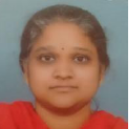
Aparna Chilakawad
Work place: Dept. of Electronics and Communication Engineering, Basaveshwar Engineering College Bagalkote, Visvesvaraya Technological University, Belagavi-590018, Karnataka, India
E-mail: aparnachilakwad@yahoo.com
Website:
Research Interests: Digital System Design, Signal Processing
Biography
Mrs. Aparna Chilakawad completed her B. E. Degree from Karnataka University, Dharwad and M.Tech. degree in Digital Electronics from Visvesvaraya Technological University, Belgaum. Karnataka, India. She is pursuing her Ph. D. in Speech Processing at ECE Department, Basaveshwar Engineering College (Autonomous), Bagalkot, Visvesvaraya Technological University, Belgaum. Karnataka, India. She has teaching experience of 19 years. Her research interests are Speech Processing, and Digital Signal Processing.
Author Articles
Time-varying Comb Filters to Improve Speech Perception in Sensorineural Hearing Loss Subjects
By Aparna Chilakawad Pandurangarao N. Kulkarni
DOI: https://doi.org/10.5815/ijigsp.2024.02.05, Pub. Date: 8 Apr. 2024
In the case of Sensorineural Hearing Loss (SNHL) persons speech perception diminishes in a noisy environment because of masking. The present work aims mainly at improving speech perception in sensorineural hearing-impaired subjects, as there is no known medical treatment for this condition. Speech perception can be improved by reducing the impact of masking. This is accomplished by splitting the speech signal into two parts for binaural dichotic presentation using time-varying comb filters having complementary magnitude responses. Using the frequency sampling method time-varying comb (FIR) filters with magnitude responses complementary to each other with 512 order are designed to split the speech signal for dichotic presentation. For the purpose of designing filters, 22 kHz sampling frequency and twenty-two one-third octave bands spanning from 0 to 11 kHz are taken into consideration. Magnitude responses of filters are continuously swept with a time shift less than just noticeable difference (JND) so that capacity to detect gaps in speech signal enhances without negating the benefits of the spectral splitting technique. Filter functioning is evaluated by using objective and subjective measures. Using Perceptual Evaluation of Speech Quality (PESQ) and spectrographic analysis an objective evaluation is made. The subjective measure is done using Mean Opinion Score (MOS) for quality of speech. MOS test is examined on normal hearing subjects by adding white noise to study materials at different SNR levels. For the evaluation of intelligibility of speech Modified Rhyme Test (MRT) is considered and evaluated on normal hearing subjects as well as bilateral moderate SNHL persons by adding white noise to study materials at different SNR levels. Study materials used for the evaluation of quality are VC syllable /aa-b/ & vowel /aa/. 300 monosyllabic words of consonant-vowel-consonant (CVC) are used as study materials for the evaluation of speech intelligibility.
The outcomes showed an improvement in PESQ values and MOS test scores for lower SNR values comparing unprocessed speech with processed speech and also an improvement in the intelligibility of processed speech in a noisy atmosphere for both types of subjects. Thus there is an enhancement in speech perception of processed speech in a noisy environment.
Other Articles
Subscribe to receive issue release notifications and newsletters from MECS Press journals